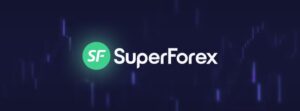Contents:
There are several types of derivative products that you can trade, with each of them having significant differences in their details, risks and benefits. Spread betting, CFDs, forwards, futures and options are some of the most popular types of derivatives among traders. As no physical assets are being traded when derivative positions are opened, they normally exist as a contract between two parties, which can be traded over-the-counter or on a stock exchange.

Now instantaneous rate of change is what happens when we take the average rate of change over shorter and shorter increments of time. So we’re letting h go to zero and as we do the secant line gets closer and closer to the tangent line, that’s what this is. Now the way we do that is the way we get h to go to zero is we take limits. So the limit as h goes to zero of the average rate of change of f of a plus h minus f of a over h and taking the limit of that average rate of change is what gives us the instantaneous rate of change. This quantity is so important to Calculus it’s given a much simpler symbol f prime of a this is the derivative of the function f at a and this symbol means the limit is h approaches zero of f of a plus h minus f of a over h.
- These instruments can be almost anything, but most swaps involve cash flows based on a notional principal amount to which both parties agree.
- Without purchasing and taking ownership of the underlying asset, traders can bet on whether they predict the price to rise or fall.
- Financial authorities and individual brokers are both regulated by the SEC.
- If we’re working with a function — $$f$$ — and we want to find “the derivative with respect to $$x$$,” that just means we’re looking to find the rate at which $$f$$ changes as $$x$$ changes.
- This notation is used exclusively for derivatives with respect to time or arc length.
Derivatives are financial contracts usually concluded between two parties involved (e.g., a broker and a bank) that obtain their derivative market value from corresponding underlying assets. An underlying asset can be a financial asset, an index , or even an interest rate. The five most common types of derivatives are futures, forwards, options, warrants, and swaps. Derivatives can serve as effective financial instruments for the purposes of hedging or be used to speculate on possible rate risks for the sake of a commensurate reward. In some common examples, interest rate derivatives (not to be confused with interest rate loans!) are often employed for the purposes of hedging against interest rate risk. The purpose of derivatives is to manage risk by allowing parties to transfer that risk to others who are willing to assume it.
Counterparty risks are a type of credit risk in that the parties may not be able to live up to the obligations outlined in the contract. If one party becomes insolvent, the other party may have no recourse and could lose the value of its position. What is a short squeeze, and how can sellers make profits in the stock market?
A derivative is a financial contract whose value is derived from the performance of some underlying market factors, such as interest rates, currency exchange rates, and commodity, credit, or equity prices. Derivative transactions include an assortment of financial contracts, including structured debt obligations and deposits, swaps, futures, options, caps, floors, collars, forwards, and various combinations thereof. OTC-traded derivatives generally have a greater possibility of counterparty risk, which is the danger that one of the parties involved in the transaction might default. These contracts trade between two private parties and are unregulated. To hedge this risk, the investor could purchase a currency derivative to lock in a specific exchange rate.
Create best investment portfolio in Forex copy trading
Call https://forexarena.net/ are financial derivatives that give you the right to buy stocks. Put warrants are derivatives known as financial contracts that give you the right to sell securities. An option is a contract which offers the buyer the right to buy or sell the underlying security at a pre-decided price on or before the pre-decided date . Assume a fund holds stock of ABC Ltd and expects the price to fall temporarily.
One is the distinction between securitised and non-securitised derivatives. Derivatives are usually traded on exchanges (exchange-traded derivatives) or over-the-counter . If an asset is “not liquid”, this means it is difficult to sell, i.e. to convert into cash. This may be especially true of tangible assets such as real estate or commodities like oil, rice and others. Remember that one of the solutions to the problem of low liquidity was the securitisation of assets.
Leverage
Traders use a futures contract to hedge their risk or speculate on the price of an underlying asset. The parties involved are obligated to fulfill a commitment to buy or sell the underlying asset. Like other derivatives markets, options contracts are traded on some of the world’s largest derivatives exchanges that serve as intermediaries between buyers and sellers. The CBOE is the largest and one of the most reliable options marketplaces in the world. Options trading is regulated by the SEC , the main function of which is to monitor the existing capital markets and safeguard them against the violation of rules or any kind of malfunction. Leverage is a financial technique that involves the use of borrowed funds.

But they also aren’t generally meant for long-term, buy-and-hold investing and can still amplify losses. Forward contracts are very similar to futures contracts, except they are set up OTC, meaning they’re generally private contracts between two parties. This means they’re unregulated, much more at risk for default and something average investors won’t put their money into. While exchange-traded derivatives are regulated and standardized, OTC derivatives are not.
Derivative definition
NWIL also acts in the capacity of distributor for Products such as PMS, OFS, Mutual Funds, IPOs and/or NCD etc. All disputes with respect to the distribution activity, would not have access to Exchange investor redressal forum or Arbitration mechanism. Transfer funds between your bank account and trading account with ease. Mutual Fund investments are subject to market risks, read all scheme related documents carefully. SEBI permits mutual funds to use derivatives for hedging purposes. If you were to sell your call option on 25 March, you would realize Rs.1.50 against an investment of Re1.00 (i.e. a gain of 50% in 55 days).
What are derivative works? Copyright for derivative works? – Lexology
What are derivative works? Copyright for derivative works?.
Posted: Thu, 02 Feb 2023 08:00:00 GMT [source]
According to the BIS, global notional amounts of OTC derivatives were $610 trillion in June 2021. The party agreeing to buy the underlying asset in the future assumes a long position, and the party agreeing to sell the asset in the future assumes a short position. The price agreed upon is called the delivery price, which is equal to the forward price at the time the contract is entered into. The price of the underlying instrument, in whatever form, is paid before control of the instrument changes. This is one of the many forms of buy/sell orders where the time and date of trade is not the same as the value date where the securities themselves are exchanged. Hedgers are institutional investors whose main aim is to lock in the current prices of a commodity through a futures contract, one of the most common types of derivative contracts.
What Are Some Examples of Derivatives?
However, it is important to be aware of potential https://forexaggregator.com/s, such as the market experiencing a negative short-term fluctuation, which could activate the stop loss order before the market conditions improve again. Explore our risk-management guide to learn more about how to protect your money in trading. Trading with leverage on derivatives involves entering into a buy or sell position and speculating on which way their chosen market will move, using a reasonably small margin/deposit. Without the investor actually owning the underlying asset, their profits or losses will correlate with the performance of the market. However, leverage will cause these profits/losses to be magnified when compared with buying the underlying asset outright. They come in a variety of types, but futures contracts, forward contacts, options and swaps are the most common.
We are not a law firm, do not provide any legal services, legal advice or “lawyer referral services” and do not provide or participate in any legal representation. Others include pork bellies, coffee beans, orange juice, gold, silver, and crude oil. Bankrate follows a stricteditorial policy, so you can trust that our content is honest and accurate. Our award-winning editors and reporters create honest and accurate content to help you make the right financial decisions.
Because the payoffs of derivative products differ from the payoffs that their notional amounts might suggest if they were cash instruments, they are kept off balance sheet. Otherwise, the balance sheet could be distorted and inflated by even a relatively small derivatives portfolio. The Chicago Board of Trade is now called the Chicago Mercantile Exchange, with more than 19 million contracts traded daily on it last year.
The Definition of the Derivative – Concept
They can reduce the chance of a major currency move, making it more difficult to pay off a debt in another country’s currency. They serve to offset and stabilize cash flows, assets, and liabilities. Derivatives may offset the negative impacts of future price increases, changes in interest rates, foreign currency rates, and even chances that a borrower will default on a loan. If you want more direct exposure to derivatives, you may be able to place options and futures trades as an individual investor. Not all brokerages allow for this, though, so make sure your platform of choice is equipped for derivatives trading. Most derivatives are margin-powered, meaning you may be able to enter into them putting up relatively little of your own money.
Derivatives are often used as an effective financial underlying instrument to determine over the counter the actual value of the asset. A warrant is a financial derivative that is issued by the company itself, providing its owner with the right to trade securities — usually equities — at a specific price agreed asset before the given expiration date. Warrants are rarely issued by a third party and are often OTC-traded. The prevailing price of an underlying security is called an exercise price or a strike price, and once a warrant is exercised, an underlying stock must be delivered. As we have already mentioned above, a derivative’s value is based on an asset; however, if you own a derivative, it doesn’t mean that you own the asset itself. The most common types of derivatives are future contracts know as standardized contracts, forwards, options, swaps, and warrants.
A derivative contract is a contract between two or more parties where the derivative value is based upon an underlying asset. Common underlying financial instruments include stocks, currencies, and commodities. The price of the derivative is determined by the price fluctuations of the underlying asset. Derivatives can be traded on an exchange or over the counter , which means trading through decentralised dealer networks rather than a centralised exchange.

Over-the-counter derivatives contracts are also subject to counterparty risk, making them hard to predict and value. Hedgers are institutional investors that use futures contracts to guarantee current fixed prices of a commodity such as oil or wheat at current prices in the future. To help mitigate this risk, parties involved in a forward contract can offset their risk by including additional counterparties to the contract.

https://trading-market.org/-traded derivatives are also beneficial because they prevent both transacting parties from dealing with each other through intermediation. Both parties in a transaction will report to the exchange; therefore, neither party faces a counterparty risk. In 2000, Congress passed the Commodity Futures Modernization Act to provide legal certainty for swap agreements. The CFMA explicitly prohibited the SEC and CFTC from regulating the over-the-counter swaps markets, but provided the SEC with antifraud authority over “security-based swap agreements,” such as credit default swaps. However, the SEC was specifically prohibited from, among other things, imposing reporting, recordkeeping, or disclosure requirements or other prophylactic measures designed to prevent fraud with respect to such agreements. This limited the SEC’s ability to detect and deter fraud in the swaps markets.